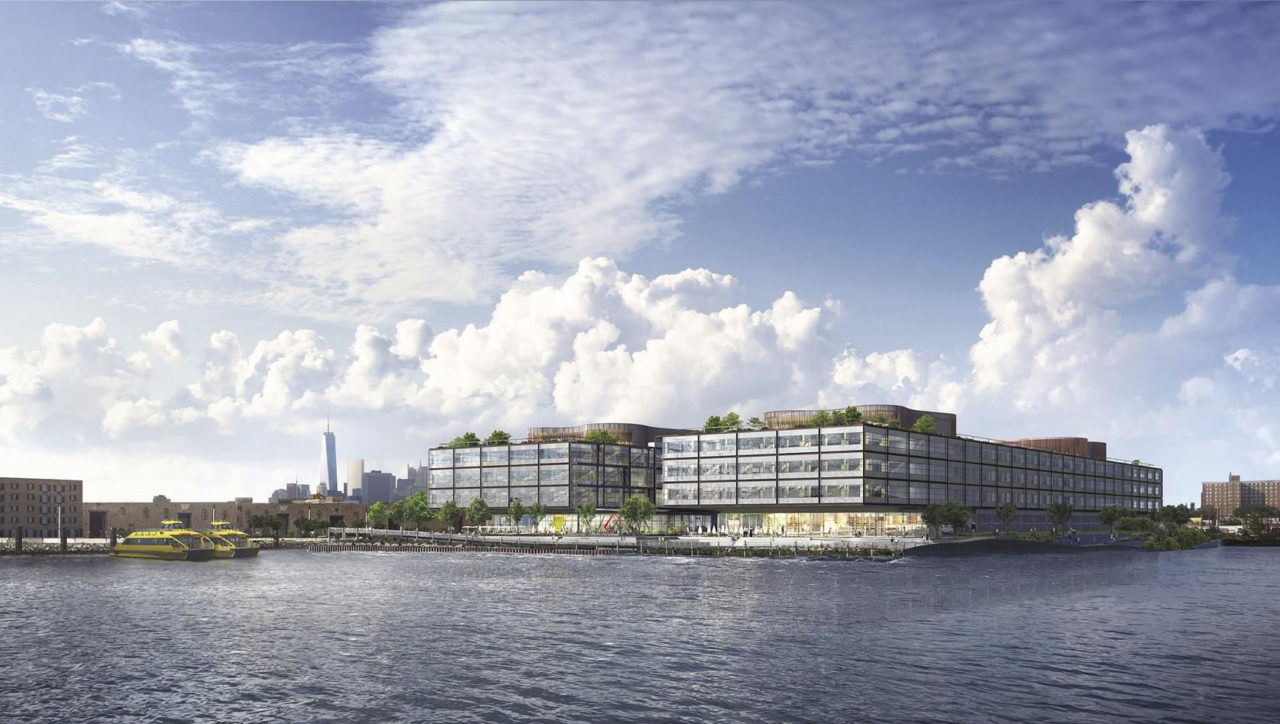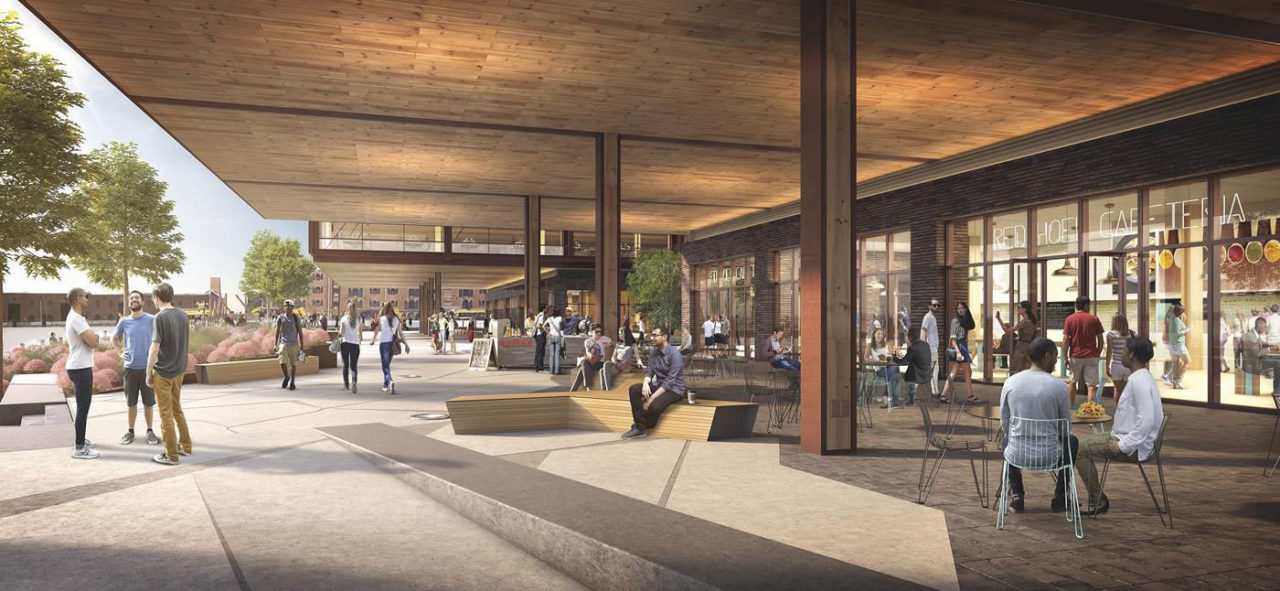
Uber-cool Red Hook, Brooklyn, has somehow managed to escape the kind of high-rise residential development slated for oh-so-many other waterfront neighborhoods around the city, particularly in the outer boroughs. Unlike Long Island City, Greenpoint, Gowanus, and the South Bronx, isolated Red Hook remains zoned for manufacturing, and it looks like it will stay that way, at least for now.
It has a kind of gritty glory to it—not to mention rich history—that people seem drawn to, despite a lack of amenities and less than efficient transit options. Companies of all sizes are coming to the once-bustling port area, where the majority of the building stock is low-rise former factories or marine repair shops, some of it long vacant or underused. Other buildings were seriously damaged by Superstorm Sandy.
UPS is the latest to announce new facilities in the enclave, 60% of whose residential population lives in the Red Hook Houses, a low-income complex with some 6,290 residents. The package delivery company is renting a 12-acre site with multiple buildings for use as a distribution center. Tesla Motors leases space in a renovated warehouse at 160 Van Brunt Street, where Milan-based Princi, a division of Starbucks, is about to open a bakery café.



It has a kind of gritty glory to it—not to mention rich history—that people seem drawn to, despite a lack of amenities and less than efficient transit options. Companies of all sizes are coming to the once-bustling port area, where the majority of the building stock is low-rise former factories or marine repair shops, some of it long vacant or underused. Other buildings were seriously damaged by Superstorm Sandy.
UPS is the latest to announce new facilities in the enclave, 60% of whose residential population lives in the Red Hook Houses, a low-income complex with some 6,290 residents. The package delivery company is renting a 12-acre site with multiple buildings for use as a distribution center. Tesla Motors leases space in a renovated warehouse at 160 Van Brunt Street, where Milan-based Princi, a division of Starbucks, is about to open a bakery café.
Ample Hills Creamery will open an ice cream factory in 15,000 square feet of space owned by the O’Connell Organization at 141 Beard Street. This complements other tenants in the O’Connell portfolio, which includes small creative businesses like Flickinger Glassworks, Fleishers Craft Butchery, and the Red Hook Winery.
Meanwhile, new construction is rare in Red Hook. Thor Equities has announced plans for Red Hoek Point, a 7.7-acre waterfront office complex designed by Foster + Partners. It will include 795,000 square feet of office space, 23,000 square feet of restaurant/retail space, and 3.6 acres of green roof.SCAPE is designing a public courtyard and waterfront promenade.
New residential units are scarce in Red Hook, best known in recent years as the location of the city’s only IKEA store, hip destination eateries like the Red Hook Lobster Pound, and glitzy weddings at Liberty Warehouse, the latest waterfront brainchild of Buzzy O’Keefe, owner of the storied River Café. A 70-unit condo conversion of the vintage 1910 New York Dock Building, done by Brooklyn-based AA Studio, is the only newcomer, and it is almost completely sold out.
If Red Hook development is slow by New York City standards, blame transportation or lack thereof. There is water taxi service, but the nearest subway is 1.5 miles away, and there is only one bus line. New subway stations have been proposed, but it is unlikely they will be built any time soon, if at all.
O’Connell, a retired NYPD detective who owns about one million square feet of property in Red Hook, including the Fairway building, sees the area as a haven for artists, craftspeople, and companies like Ample Hills Creamery, his newest tenant. He keeps his rents low, in the $12 to $20 per square foot range, to appeal to those people and companies. By comparison, the going rate is about $40 per square foot in the renovated Tesla building, and $20 per square foot in the South Bronx, where some building stock is similar.
O’Connell bemoans the way urban areas push out small businesses, and hopes more see Red Hook as an option. “We don’t do enough to address creative industries,” he said. “Creative people come out of Pratt, and we don’t have affordable space for them.”
His vision for Red Hook is rooted in its history. “It could be a great example of a real balanced neighborhood,” he said. “Historically, this was a working waterfront whose workers lived in the area and went to the churches and the local schools. It still has a great feeling to it. People love it.”
Claire Wilson is a longtime contributor to Oculus and the New York Times.








